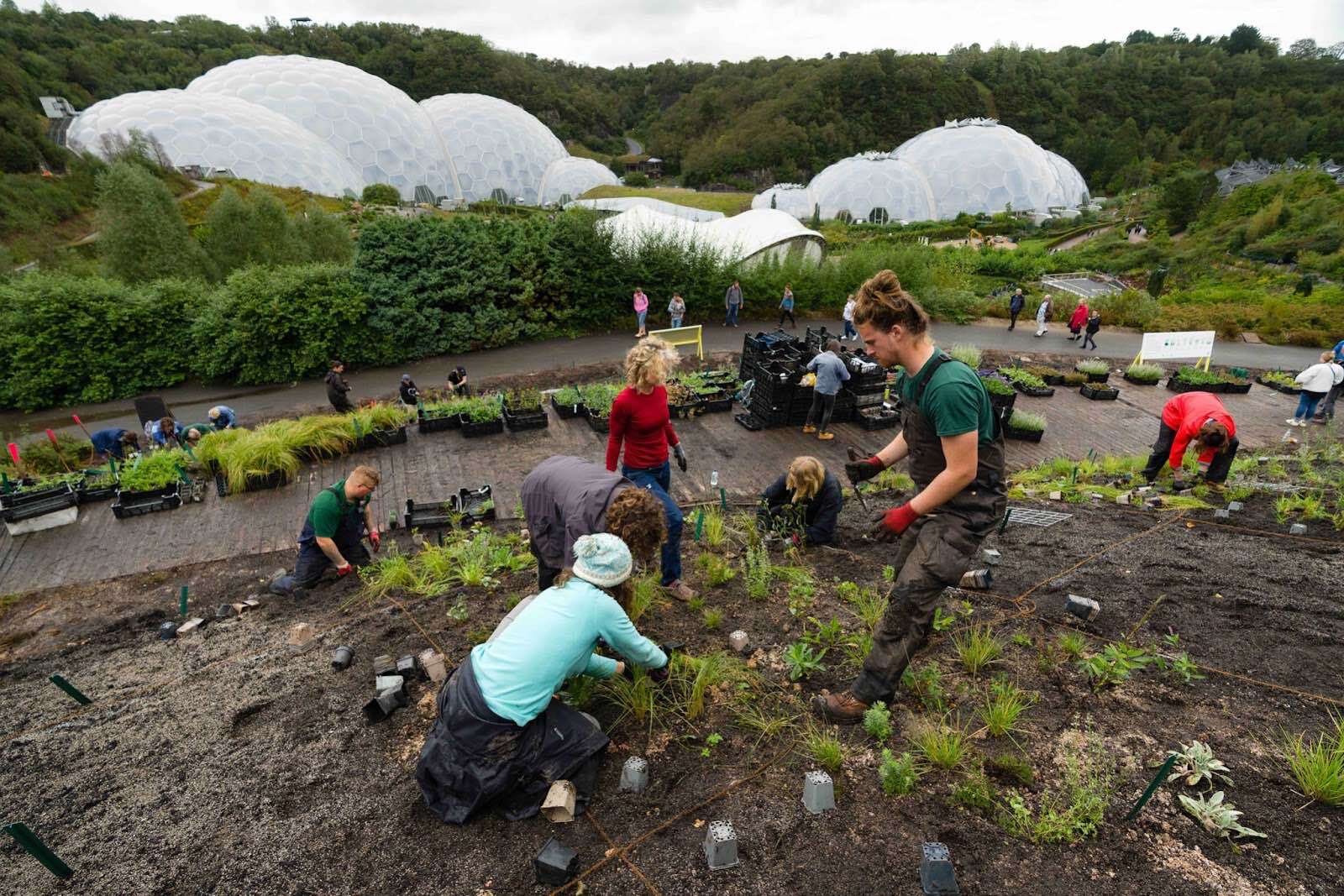Art Calendar / Environment & Art, 27 March 2022
Pollinator Pathmaker
the largest living artwork ever created for climate change mitigation blooms in spring.
Where
Pollinator Pathmaker by Alexandra Daisy Ginsberg.
Eden Project, Bodelva, Cornwall, PL24 2SG

Alexandra Daisy Ginsberg as the plants were sown. Image: Steve Tanner
Alethea & Art previously reported when Pollinator Pathmaker - a 55 meter living artwork by Alexandra Daisy Ginsberg was planted in the fall of 2021.
The project is dedicated to the vital role of pollinators and will be in full bloom for the first time this May at the Eden Project in Cornwall. The bees, moths, beetles and wasps that the artwork is about have also arrived in the meantime.
The artwork, consists of 7000 plants of 64 species and raises the question of what a garden is and who it is for. Pollinator Pathmaker is not only a work of art, but also a global campaign to create art for pollinators, planted and cared for by humans. Over the past 40 years, the number of pollinating insects has declined dramatically due to habitat loss, pesticides, invasive species, and climate change, and the artwork is meant to be a call to action. The loss of a single pollinator species can spell the end for an entire plant species.
More Pollinator Pathmaker gardens will be created this year, at the Serpentine in London and LAS (Light Art Space) Berlin in the spring.
Alexandra Daisy Ginsberg has also created a garden plan on a website pollinator.art with a special algorithm that suggests plants to create your own pollinator garden. On the website, participants can also watch their digital garden change throughout the year as flowers for different pollinators pop up in an animated seasonal view.
The artwork is about accessing garden design and thinking about what you plant and who a garden is for. The artist wants to promote empathy for plants and the role of pollinators while people face the environmental crisis together.

Horticultural apprentices plant the garden. Image: Steve Tanner
The Eden Project
The Eden Project's world-renowned biomes are fronted by 11.5 hectares (28 acres) of outdoor gardens. The Pollinator Pathmaker installation is located in the Wild Edge zone that wraps around the slopes of the gardens. Pollinators see colors differently than we do, forage in different ways, and appear at different times of year than we do. As a result, a garden designed for them may look very different from a garden designed for us, and Eden's grounds will come up with unusual color combinations - unusual to the human eye, at least.
Where to find the Pollinator Pathmaker:
The artist
Alexandra Daisy Ginsberg - daisyginsberg.com
Dr Alexandra Daisy Ginsberg is an artist examining our fraught relationships with nature and technology. Through artworks, writing, and curatorial projects, Ginsberg’s work explores subjects as diverse as artificial intelligence, synthetic biology, conservation, and evolution, as she investigates the human impulse to “better” the world.
Ginsberg spent over ten years experimentally engaging with the field of synthetic biology, developing new roles for artists and designers. She is lead author of Synthetic Aesthetics: Investigating Synthetic Biology’s Designs on Nature (MIT Press, 2014), and in 2017 completed Better, her PhD by practice, at London’s Royal College of Art (RCA), interrogating how powerful dreams of “better” futures shape the things that get designed. Ginsberg won the World Technology Award for design in 2011, the London Design Medal for Emerging Talent in 2012, and the Dezeen Changemaker Award 2019. Her work has twice been nominated for Designs of the Year (2011, 2015), with Designing for the Sixth Extinction described as “romantic, dangerous… and everything else that inspires us to change and question the world”. Ginsberg exhibits internationally, including at MoMA New York, the Museum of Contemporary Art, Tokyo, the National Museum of China, the Centre Pompidou, and the Royal Academy, and her work is held in museum and private collections. Talks include TEDGlobal, PopTech, Design Indaba, and the New Yorker TechFest. Daisy is a resident at Somerset House Studios, London.


